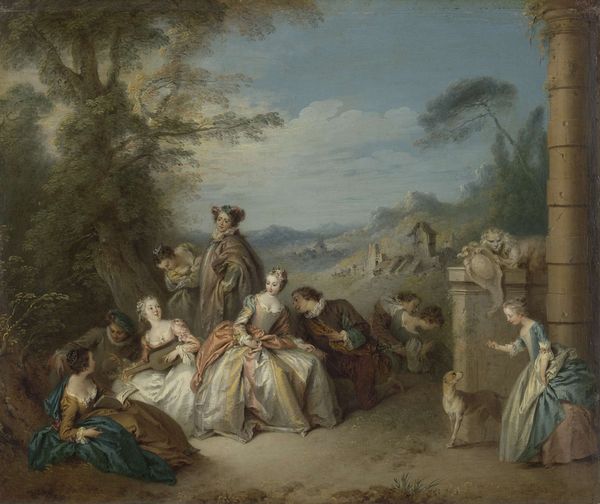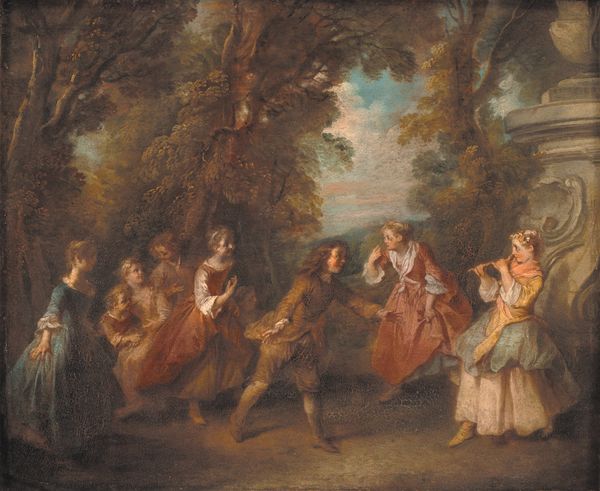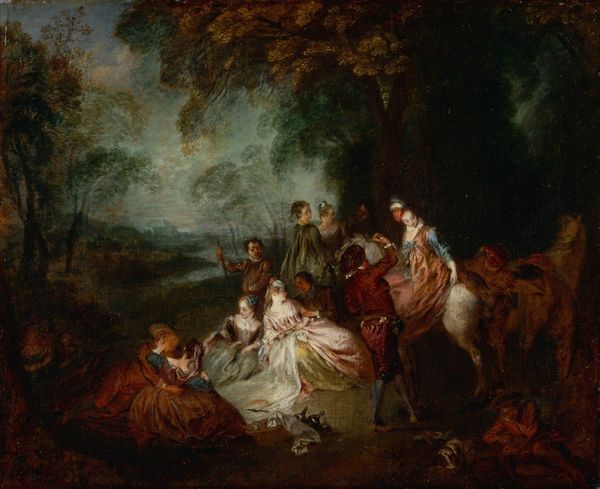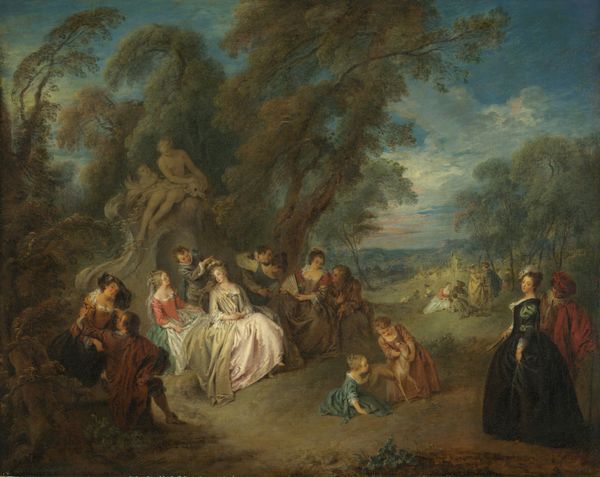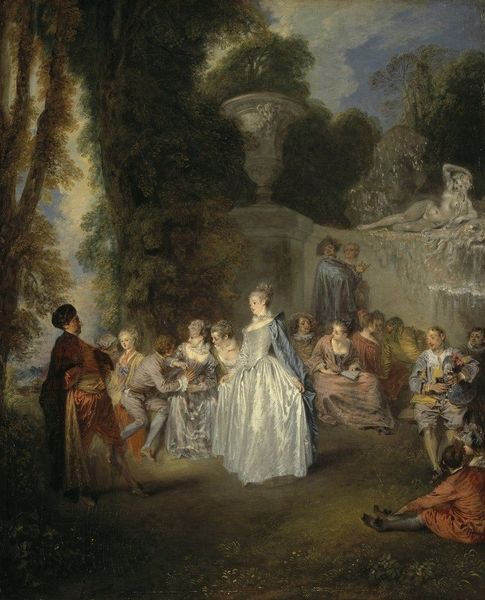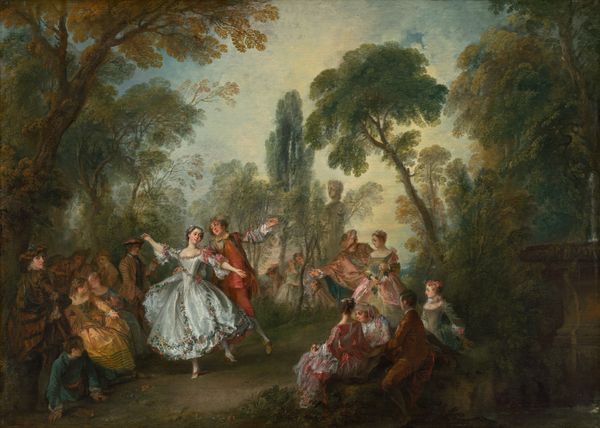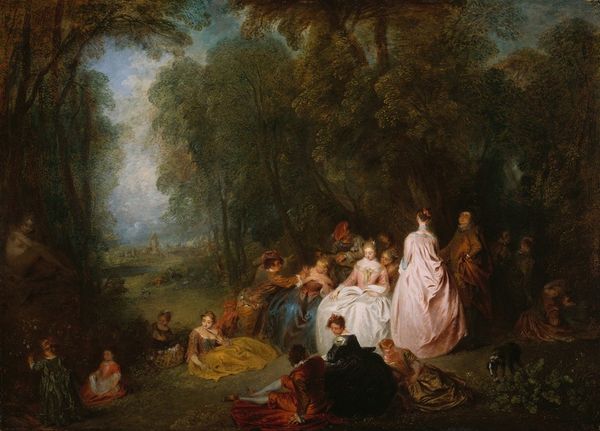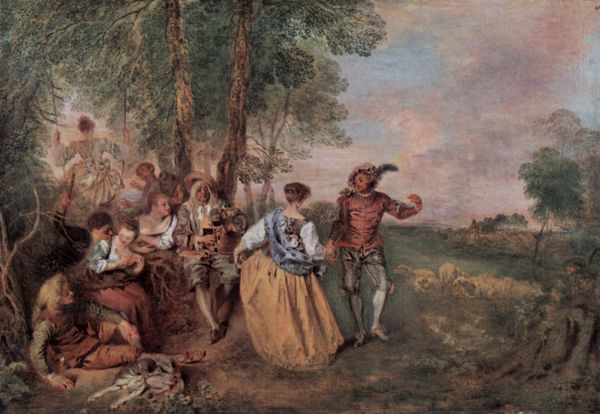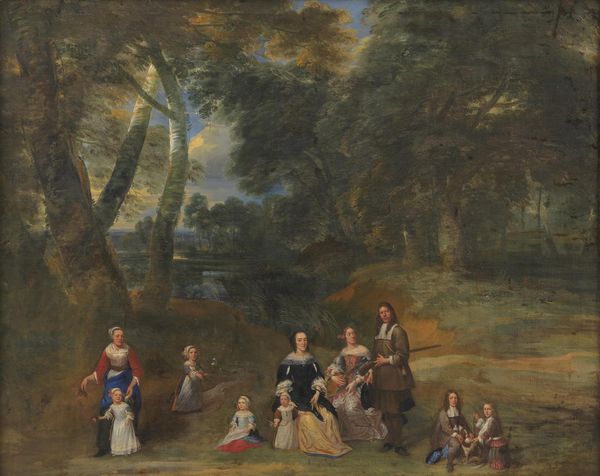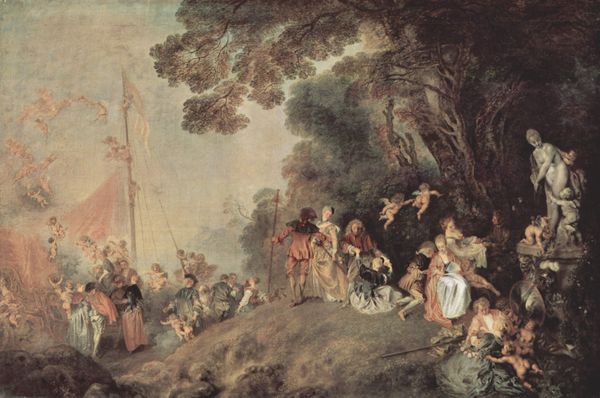
painting, oil-paint
#
gouache
#
figurative
#
painting
#
oil-paint
#
landscape
#
figuration
#
oil painting
#
genre-painting
#
history-painting
#
watercolor
#
rococo
Copyright: Public Domain: Artvee
Curator: Standing before us, we have "The Love Lesson," an oil on canvas piece by Jean-Antoine Watteau. What strikes you first? Editor: It's light and airy, with a romantic, almost melancholic feel. The figures seem lost in a dream, nestled in this idyllic, overgrown garden. There is something ethereal in the composition, as though it existed between fantasy and memory. Curator: Watteau, of course, was known for his fêtes galantes, these elegant outdoor scenes. Let's consider the artist's process. Observe how the composition reflects his method, with the blending of oil paint that lends the scene a hazy, almost dreamlike quality, softening the social and economic realities into pure idyll. The figures here are not merely aesthetic elements but part of a consumerist cycle of luxury. Editor: Agreed, the handling of the materials is key. Look at the nuanced application of paint – especially how it defines their elegant costumes against the backdrop, and note the dynamism introduced with the guitarist poised on the left. The brushwork directs the viewer's gaze from left to the cluster of characters in the centre and further still to the more faded and arguably ethereal statuary perched within the darker foliage. Curator: And don't forget, paintings such as these were products destined for specific patrons. The clothing they wear, the musical instruments they hold—all symbols reflecting and reinforcing aristocratic pastimes. Editor: True, but it's the interplay between light and shadow that truly captures my attention. The subtle gradations and hazy atmosphere give depth to the space and shape the figures who seem, like stage actors, as essential components in an outdoor spectacle. I also think of the symbolism of the statue there. What significance does that presence add? Curator: Indeed, perhaps symbolising an escape from earthly constraints or the idealized nature of courtly love—aspects deeply enmeshed in the Rococo sensibility and driven by the demands of the leisure classes Watteau supplied. Thinking about it, the artwork opens multiple questions about cultural history. Editor: I concede. It provides much to discuss. The artwork draws the observer in, not only to behold its representational richness but also to think about the formal nuances, while contextualized insights broaden understanding even more, encouraging layered analyses and deep engagement.
Comments
No comments
Be the first to comment and join the conversation on the ultimate creative platform.
